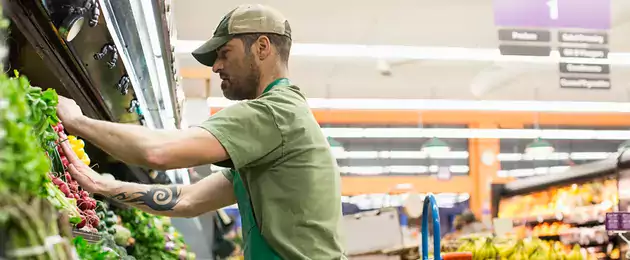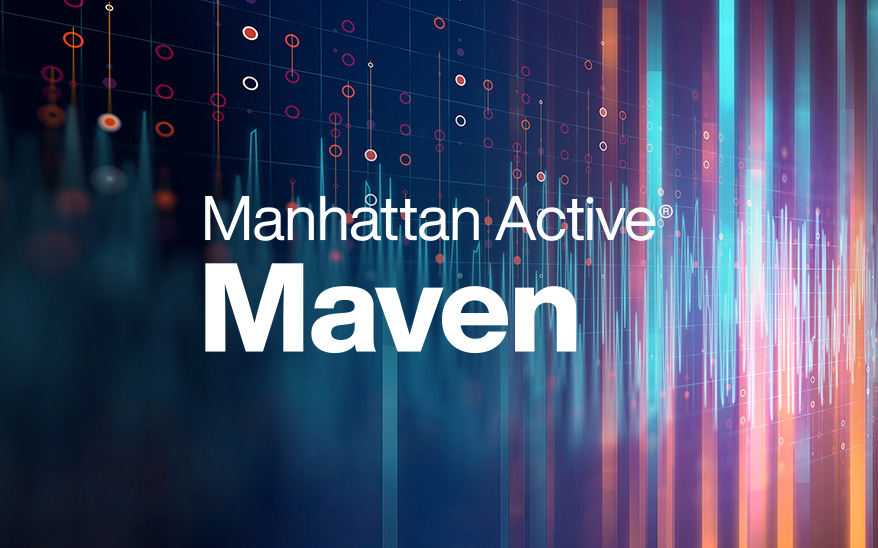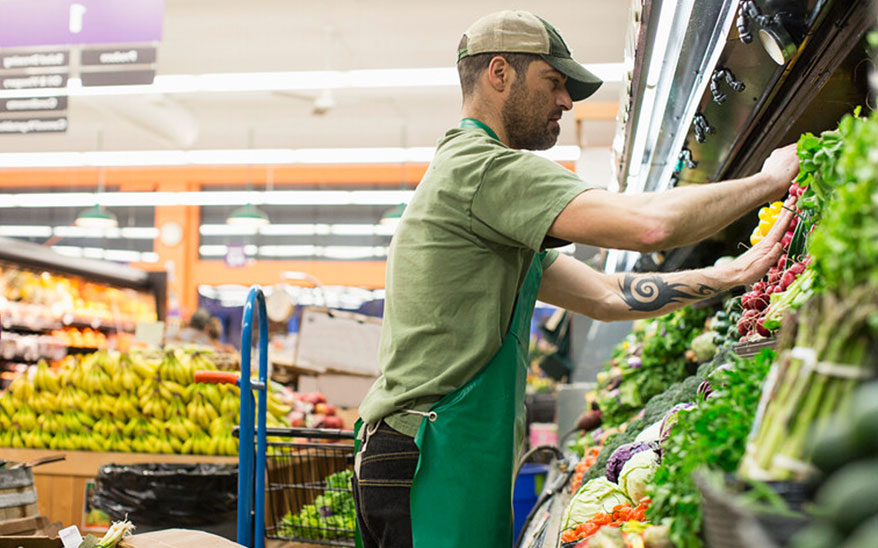Ahold Delhaize’s Supply Chain Transformation
- August 7, 2020
- By Steve Banker

This article originally appeared on Forbes.
In December of 2019, the global grocery retailer Ahold Delhaize announced it was investing $480 million to transform and expand its U.S. supply chain operations in support of a new three-year strategy to move to self-distribution. In self distribution, the company insources many supply chain activities that were formerly outsourced.
Ahold Delhaize was formed in July 2016 from the merger of Ahold and Delhaize Group. The retailer’s grocery chain banners in the U.S. include Food Lion, Giant Food (of Landover), The GIANT Company (of Carlisle), Hannaford, and Stop & Shop.. The company has a very strong East Coast presence. The US operations generated over $47 billion of the global retailer’s revenues – over 60 percent of the total.
According to Chris Lewis, Executive Vice President of Supply Chain for Retail Business Services , prior to the Ahold Delhaize merger, Delhaize did their own logistics and most of their own procurement. Ahold, on the other hand, outsourced about 70 percent of their logistics and procurement to C&S Wholesale Grocers, the US’s largest wholesale grocery supply company. Retail Business Services is the shared services group that has emerged subsequent to the merger. Among other responsibilities, Retail Business Services is responsible for supply chain services including logistics, procurement into the Distribution Centers, and supply chain strategy for Ahold Delhaize’s US operations.
In the U.S., 17 Distribution Centers provide fulfillment to over 2000 stores on the East Coast. The company is also acquiring another Distribution Center, building 2 frozen facilities, and just leased an ambient temperature DC in Connecticut. 1.1 billion cases flow through this network every year. The warehouse network will expand to 26 facilities by 2023. In the deal announced in December, Ahold Delhaize USA will take back all the outsourced Distribution Centers over next 30-36 months.
“Moving to a self-managed supply chain will enable Retail Business Services to reduce costs for the local brands it serves, improve speed to shelf, deepen relationships with vendors and better position our companies’ distribution centers in the communities they serve,” according to Mr. Lewis. “These changes will enable us to take advantage of financial and strategic value within procurement, logistics and warehousing to provide the freshest product through the most advanced, efficient delivery network in the grocery industry. Once the transformation is complete, Ahold Delhaize will save $100 million per year.”
Supply Chain Technology is Key to the Transformation
The two frozen warehouses the company plans to open will be highly automated facilities. The distribution centers, being constructed in partnership with Americold, will use automated storage and retrieval systems (AS/RS) from Dematic. This investment will reduce labor costs. But getting workers willing to work in frozen DCs can be a problem. In the future, Retail Business Services will also examine the use of autonomous mobile robots to support warehouse pickers.
Ahold Delhaize is committed to sustainability. Their annual report combines both financial and sustainability results. The annual report states that the global grocer was ranked among industry leaders in the Dow Jones Sustainability World Index. The global grocer reduced their year over year carbon-equivalent emissions by 4.6%.
Thus, as important as automation, was making sure the frozen distribution centers were optimally located. The retailer used a network design solution from LLamasoft to properly locate these warehouses. The LLamasoft software allows transportation, warehousing, and inventory carrying costs to be traded off in a manner that allows the company to hit service level targets while reducing costs. These two frozen facilities, when open, will reduce trips from these two warehouses to their stores by 2.5 million miles, lowering freight costs by $3 million while simultaneously reducing greenhouse gases.
While good placement of warehouses helps reduce the miles trucks drive to fulfill orders to the stores, transportation management systems (TMS) also play a key role. Currently 1,000 trucks are traveling more than 120 million miles annually across the East Coast network. A TMS reduces freight costs in a variety of ways. For contracted carriers, the TMS leads to better negotiations of long-term contracts. The freight audit functionality makes sure the carriers are not being overpaid. But much of the savings in a TMS comes from better routing and insuring trucks are more fully loaded – these capabilities save money and reduce emissions. Retail Business Services has selected Manhattan Associates’ transportation management system.
Retail Business Services is also in the process of selecting a common warehouse management system (WMS). A WMS increases picking efficiencies, which lowers labor costs. In making sure trucks are efficiently loaded and leave on schedule, having WMS and TMS solutions that are tightly integrated can improve synergies. While Retail Business Services has not made the final decision on who they will go with for WMS, Manhattan Associates’ WMS solution is in the mix.
Mr. Lewis said, “we are willing to add complexity in our warehouse operations, to reduce complexity at the stores.” When a mixed pallet arrives at a store, a pallet with different products on different layers of the pallet, the pallet should be designed in such a way that when the top layer is picked and goods are put on the shelves, the product on the next layer down will not require store workers to wheel the pallet from one end of the store to the other to reach the next stocking location.
Retail Business Services is also in the midst of rolling out a demand planning and inventory replenishment system. An end-to-end solution from RELEX will be live for all 1200 Food Lion and Hannaford stores by Q1 2021. It will then be rolled out in phases to the other banners. The solution applies brand-specific machine learning to point of sale data, sales history, and promotional plans to more accurately forecast demand. Better demand forecasts lead to increased availability of goods on the shelf at lower inventory levels. The RELEX solution also has strong automation, automatically generating replenishment orders for a large percentage of orders. The RELEX system also lets planners know when the system believes their overrides, the replenishment order for a store or stores, is too low. This could result in lost sales. The system generates lost sales warnings that escalate to the planners’ managers. This is a powerful catalyst for culture change. This Inventory savings are another way that Retail Business Services aims to achieve their $100 million in annual savings.
Collaboration with Store Operations and Suppliers is Critical
Key to achieving these store level service level improvements and savings will be achieving better inventory accuracy at the store. Store level inventory accuracy is notoriously bad, although it has improved in recent years. Ahold Delhaize’s target service level at the shelf is 99 percent. Research by Chris Cunnane, of ARC Advisory Group, shows that only 17 percent of retailers achieve this service level. Because grocers carry so many different products and the inventory turns so fast, the grocery industry’s store level inventory accuracy is probably far lower than other types of retail.
Mr. Lewis explained that store operations is ultimately responsible for improving the inventory accuracy at the store. But by using the RELEX solution the supply chain team can help predict when a store’s inventory count is wrong for a SKU. The RELEX solution includes business rules suggesting a shelf audit be done for that product. Lost sales alerts aimed at store managers provide incentives for stores to do the shelf audits and restocking. “With ecommerce, and pick from store fulfillment of customer orders, store level inventory accuracy is even more important” Mr. Lewis explained.
Retail Business Services has offered in-store mobile robots, which select Ahold Delhaize USA brands have elected to roll out, with a friendly face, named Marty, to identify hazards, such as food spilled in the aisles. The robots then provide reporting that enables corrective action. They help stores mitigate risk caused by such spills, as well as enable associates to spend more time serving and interfacing with customers. In the future, Mr. Lewis said, these robots can also be programed to improve shelf level inventory performance by identifying empty slots.
Retail Business Services is also looking to better collaborate with suppliers with new procurement programs. For example, the company might identify places in the end-to-end supplier-to-retailer supply chain where excessive dwell time or poor shipment sequencing is hindering fulfillment execution. Retail Business Services is appointing coaches to work with the supplier’s supply chain teams. The idea is that if Retail Business Services drives lower costs for suppliers, they will share in the savings.
Inventory visibility is key to this collaboration. When a consumer goods company agrees to a store promotion, they want to know that promotion was fully executed across all the participating stores. If an end cap promotion is agreed to, in store visibility is based on associates taking pictures of the end caps with iPads (in the future this could even be a task for the Marty robots). It may be that the pictures show that in 5 percent of the targeted stores, the end caps are not up. These would be turned into alerts and would trigger store operations to build those end caps. This provides assurance to the supplier they got what they paid for. Better execution can incentivize supplier to engage in larger win/win events. For example, instead of doing a promotion across just one banner, doing a promotion across all banners - and all 2,000 plus stores – will become possible. For this size promotion, Retail Business Services might ask for an extra five cents off per case.
Retail Business Services is also working to build improved control tower capabilities. These control towers will have improved visibility to both inventory at rest in stores and distribution centers, but also inventory in motion – inbound inventory heading to distribution centers. If a hurricane is charging up the East Coast, it would be natural to want to stock stores with more water and related products that customers want to ride out the storm. The control tower might be able to see that the warehouses have enough water on hand, but that getting enough labor to build expedited loads could be a problem. The control tower provides the visibility to explore different options.
In conclusion, this is quite a transformation. The transformation will save significant amounts of money, improve customer service, and aid Ahold Delhaize in reaching their sustainability goals. The transformation relies on technology, culture change, and new processes. Ahold Delhaize has not gotten the same plaudits for their supply chain efficiencies as Amazon and Walmart. This will begin to change these perceptions.
Steve Banker Bio
I am the Vice President of Supply Chain Services at ARC Advisory Group, a leading industry analyst and technology consulting company. I engage in quantitative and qualitative research on supply chain management technologies, best practices, and emerging trends. I’ve been published in Supply Chain Management Review, have a weekly column in Logistics Viewpoints (www.logisticsviewpoints.com), and can be followed on Twitter @steve_scm or contacted at sbanker@arcweb.com.



